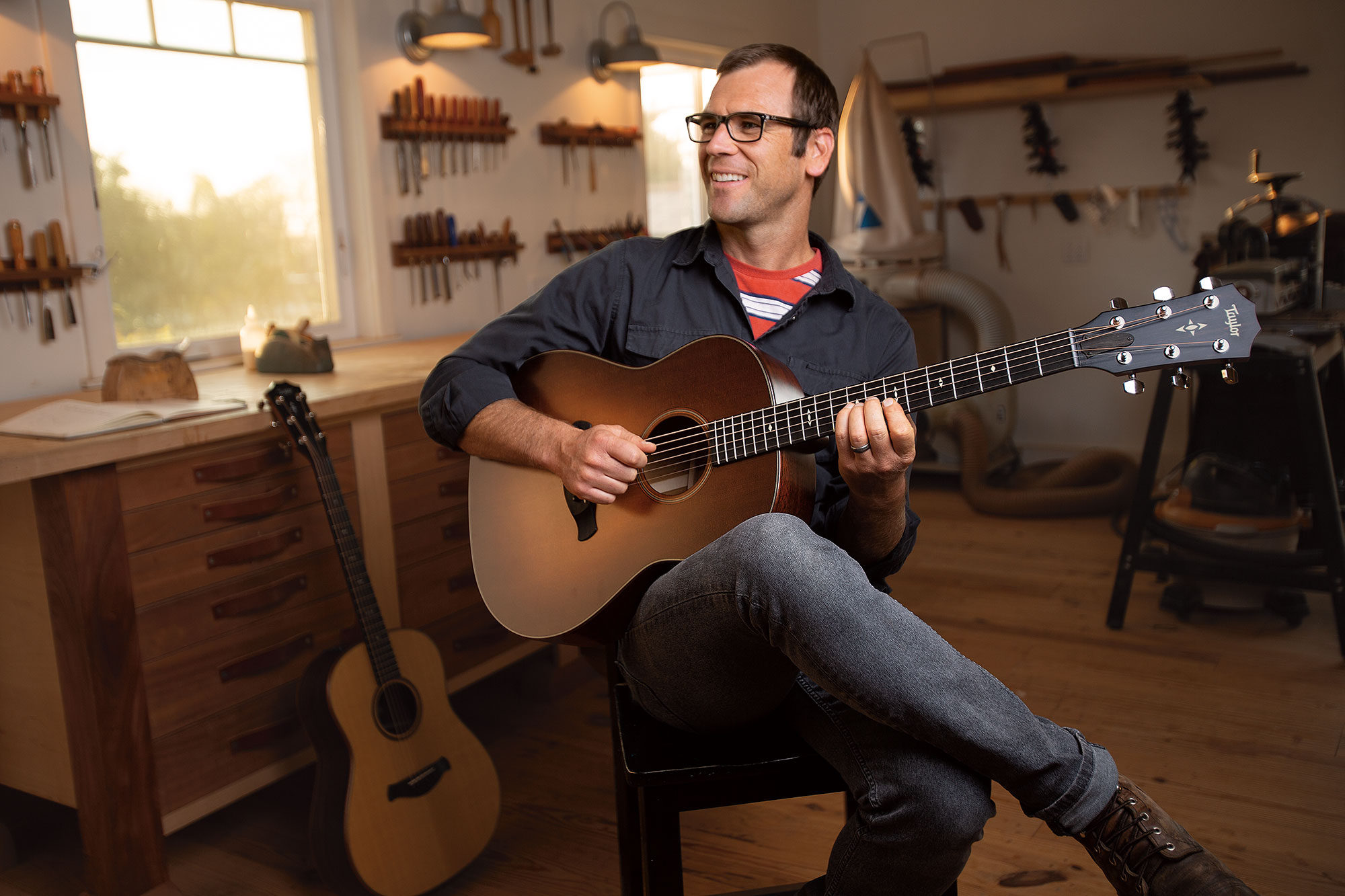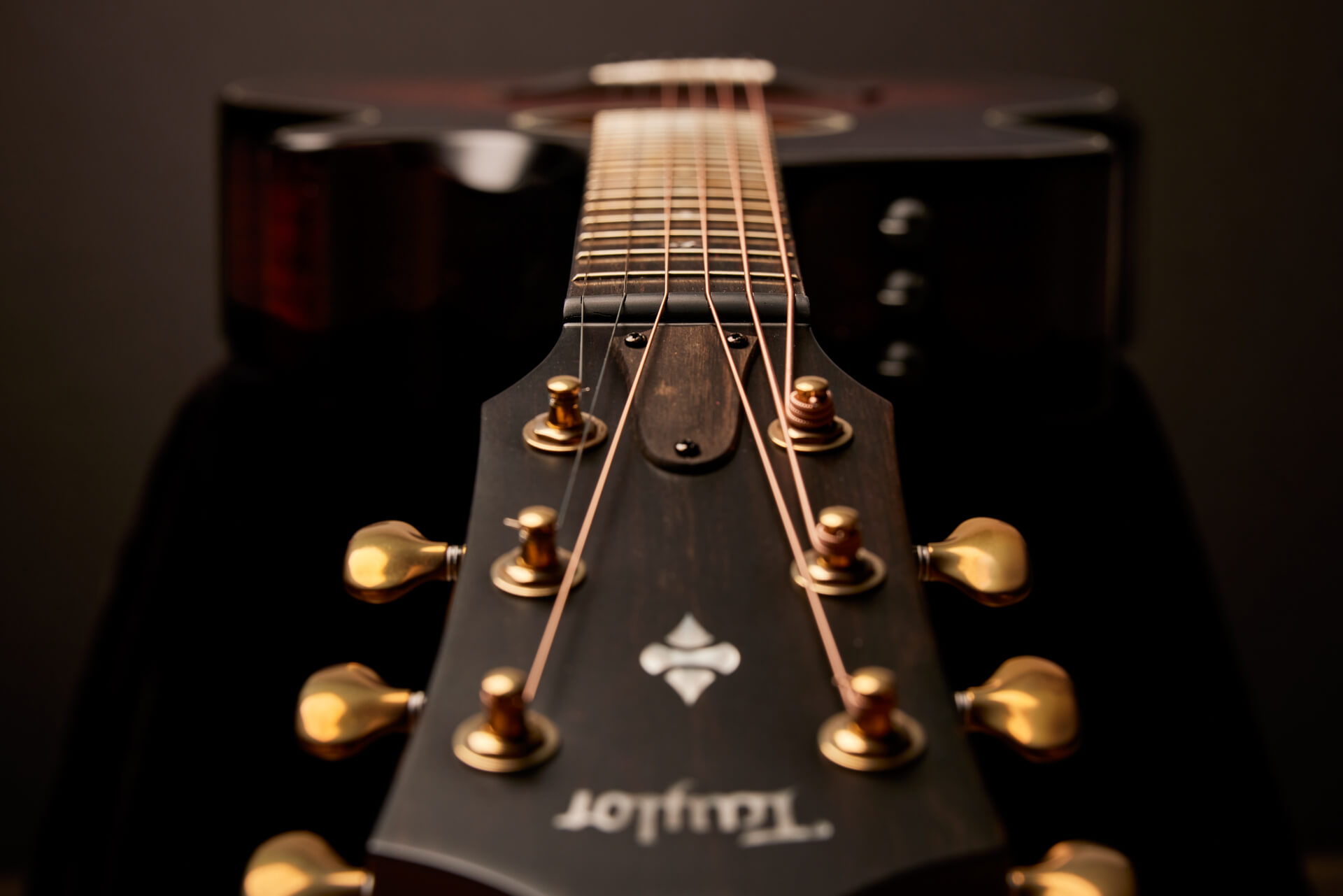“If these trees could talk, what would they say?”
The question made me pause and consider what exactly I was looking at. Before me was a beautiful bench made from a single slab cut from a redwood tree. The man who asked this playfully unanswerable question, a friend nearly 70 years my senior, had seen more in his lifetime than most would be fortunate to see in two. He had built this bench — “a simple place to sit awhile,” as he humbly described it — from an ancient tree that had fallen in a storm some 30 years prior. Here was a man who had lived through so much, created a profoundly prolific body of work, yet was fully aware of how short a span of time a lifetime represents. When faced with a tree, centuries old, I suppose the timeframe of human events does seem to shrink.
I’ve thought about that question throughout the construction of nearly every instrument I’ve made since I first heard it asked. What would this tree, this guitar, have to say if it could speak? I commonly hear questions about certain species of woods: where exactly a tree grew, or what differences there are between trees of the same type that grew in different countries. It’s fun to imagine two spruce trees growing in neighboring countries and speaking different languages at each other, all because a surveyor decided to draw a line on a map, dividing the landscape. The reality is that many trees have a lifespan so vastly different from our own, they seem unconcerned about where we draw our lines. Yet, each of these trees does in fact have a unique story to tell, revealed across each grain line and colorful swirl of figure, all coming together in the guitar we so love. The fact that each guitar is made from so many different trees, with so many backgrounds, is amusingly apparent. Within one instrument, we can expect to see woods from the tropics, the northern climates, from Europe, Asia, Oceania and here in the Americas. It’s as if the guitar is built as a mirror to the varied backgrounds of its players.
The guitar has been regarded as a universal instrument, and I think that has to do with the fact that we as people have some shared experience, and a curious need for art and music. I say curious because, at first glance, music doesn’t seem all that necessary. Food, shelter and protection all seem like elementary necessities, and rightly so. These are essential services, to use a now-common phrase. For that reason, much of our day-to-day experience is in pursuit of these, or the improvement of these needs. But when life’s experiences overtake the need for mere physical sustenance, where can we turn? There is little comfort to be found in efficiency or productivity when we are trying to make sense of what we see going on around us. Words alone can’t adequately express the loss we feel when coping with a friend’s untimely departure. In the same way, they are utterly insufficient when trying to express a complete and expansive joy. For this, the human-experience aspect of living, art and music are no longer luxuries; they become sustenance, the currency of emotion.
“If anything, history will show us how, during the most uncertain of days, people turn to the realism of self-made music to connect with their family, their friends, their communities, and their own thoughts.”
As an instrument goes, the acoustic guitar offers everything we need to serve as the perfect companion through which to share our narratives: portability, accessibility, simple honesty that allows direct, unhindered expression of the human spirit. It’s an antithesis of the detachment of virtual reality. The guitar can serve as a ballast to stabilize our thoughts and our connection in an age of seeming existential crisis. For this reason, it should come as no surprise that an unprecedented number of people are taking up playing the guitar for themselves during these past weeks and months as, collectively all around the world, we grapple with the uncertainty we face.
So much has changed, and so quickly, it seems we haven’t even had enough time to become astonished yet. Even the way we take in music through live performances has changed. Sitting around a backyard campfire late one clear April night, a close friend who has made a profession from playing music remarked that since large crowds of people are his line of work, he wasn’t sure how things were going to work out from there. But despite the change in musical setting, there we were again, using songs to sing what couldn’t adequately be said. If anything, history will show us how, during the most uncertain of days, people turn to the realism of self-made music to connect with their family, their friends, their communities, and their own thoughts, and these days seem to reflect a broad and fresh renaissance of artistic creativity.
While we couldn’t have predicted these current circumstances, some time ago we set in motion a project to bring to light a fresh instrument to play, which now seems more appropriate than we could have imagined when it was first created. Our new Grand Theater, or GT as we call it, was intended to be a “just right” guitar: an instrument that is easy to hold, easy to play, easy to express yourself through. It’s designed to be an inclusive guitar—having a voice that welcomes an experienced player, a new player and all players in between. It’s intended to be a universal guitar to make music for yourself, your family, your friends, the few, the many, for strangers who are strangers only because they are not yet known. It’s a guitar on which to share your songs, because they are needed now more than ever, whether on a stage or around a campfire. It’s made of solid woods — some trees young, some old. When we look at each of those pieces of wood and ask ourselves what they would say if they could talk, we know they can’t speak a word. But together, they can surely sing. We hope you enjoy these instruments as much as we do.
Andy Powers is Taylor’s Master Guitar Designer.

